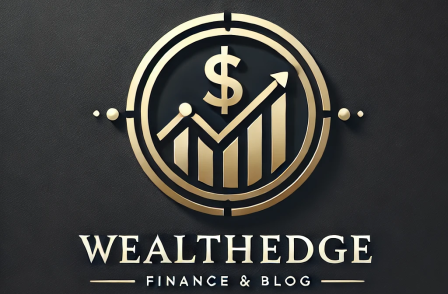Meta Description: Discover the latest interest rate and mortgage trends for 2025. Get expert insights on home loans, refinancing options, and tips to secure the best mortgage rates.
Introduction
Interest rates and mortgage trends play a crucial role in the housing market, directly impacting homebuyers, sellers, and real estate investors. As we move into 2025, understanding these trends can help you make informed financial decisions, whether you’re buying your first home, refinancing, or investing in real estate.
In this comprehensive guide, we’ll explore current mortgage trends, expert forecasts, and actionable strategies to secure the best loan terms. Read on to gain valuable insights that can save you thousands on your home purchase or refinance.
Understanding Interest Rates and Their Impact
What Are Interest Rates?
Interest rates represent the cost of borrowing money from a lender. Set by central banks, such as the Federal Reserve in the U.S., interest rates influence everything from credit card rates to mortgage loans. When rates are low, borrowing becomes cheaper, stimulating the economy. Conversely, higher rates make loans more expensive, slowing down economic activity.
How Interest Rates Affect Mortgages
Mortgage rates fluctuate based on economic conditions, inflation, and Federal Reserve policies. Even a small change in interest rates can significantly impact your monthly mortgage payment and overall home affordability.
For example:
- A 30-year fixed mortgage at 3% on a $300,000 loan = $1,265/month.
- A 30-year fixed mortgage at 6% on the same loan = $1,799/month.
This difference of over $500 per month highlights the importance of securing a low mortgage rate.
Current Mortgage Rate Trends in 2025
1. Rising or Falling? What Experts Predict
Economic analysts predict that interest rates in 2025 may fluctuate depending on inflation trends and Federal Reserve decisions. The Federal Reserve has indicated a cautious approach to rate adjustments, balancing inflation control with economic growth.
Some key predictions:
- If inflation slows down, expect slight reductions in mortgage rates.
- If inflation remains high, mortgage rates could stay elevated or even rise further.
- Market volatility may lead to short-term fluctuations, requiring homebuyers to stay alert for rate drops.
2. Fixed vs. Adjustable-Rate Mortgages (ARMs)
As mortgage rates change, homebuyers must decide between fixed-rate and adjustable-rate mortgages:
- Fixed-Rate Mortgages: Lock in an interest rate for the loan’s duration, ensuring predictable monthly payments.
- Adjustable-Rate Mortgages (ARMs): Start with lower initial rates but adjust periodically based on market conditions.
In 2025, ARMs might regain popularity among borrowers seeking lower initial payments, especially if rates are projected to drop.
3. The Role of Inflation and Economic Growth
Inflation remains a key driver of mortgage rates. If inflation cools, rates may decline, making homes more affordable. However, if inflation persists, expect lenders to raise mortgage rates to offset risks.
Economic growth also plays a role. A booming economy with strong job growth may lead to higher demand for homes, pushing mortgage rates up. Conversely, economic slowdowns can lead to lower rates as the Federal Reserve intervenes to stimulate borrowing.
How to Secure the Best Mortgage Rates in 2025
1. Improve Your Credit Score
A higher credit score can unlock lower interest rates. Here’s how to boost your score:
- Pay bills on time.
- Reduce your debt-to-income ratio.
- Avoid opening new credit lines before applying for a mortgage.
2. Save for a Larger Down Payment
Lenders offer better rates to borrowers who put down at least 20%. If you can’t reach 20%, consider saving for a larger down payment to lower your loan-to-value (LTV) ratio and reduce private mortgage insurance (PMI) costs.
3. Shop Around for Lenders
Different lenders offer different rates. Comparing multiple mortgage offers can save you thousands over the loan’s lifetime. Use online comparison tools or work with a mortgage broker for the best options.
4. Consider Refinancing If Rates Drop
If mortgage rates decline in 2025, refinancing your existing loan could lower your monthly payments or shorten your loan term. Keep an eye on rate trends and be prepared to refinance if it makes financial sense.
The Future of Home Buying in 2025
1. Housing Market Predictions
Real estate experts foresee a competitive market in 2025. Key trends include:
- Increased demand for affordable housing.
- Growth in suburban and rural home purchases.
- Potential cooling of home price appreciation due to higher rates.
2. First-Time Homebuyers: What to Expect
First-time buyers may face challenges due to rising home prices and interest rates. However, government-backed loan programs (FHA, VA, USDA) can provide lower down payment options and competitive interest rates.
3. Real Estate Investment Opportunities
For real estate investors, mortgage rate trends will dictate strategies. With rates stabilizing, rental properties and fix-and-flip investments could remain profitable in 2025.
Conclusion: Take Action Today
Navigating interest rates and mortgage trends requires staying informed and proactive. Whether you’re buying a home, refinancing, or investing, the right mortgage strategy can save you thousands.
Next Steps:
- Monitor interest rate trends and market conditions.
- Improve your credit score and financial profile.
- Compare lenders for the best mortgage deals.
- Consider refinancing if rates drop.
For more expert insights on home financing, subscribe to our blog and stay ahead in the ever-changing mortgage landscape!
